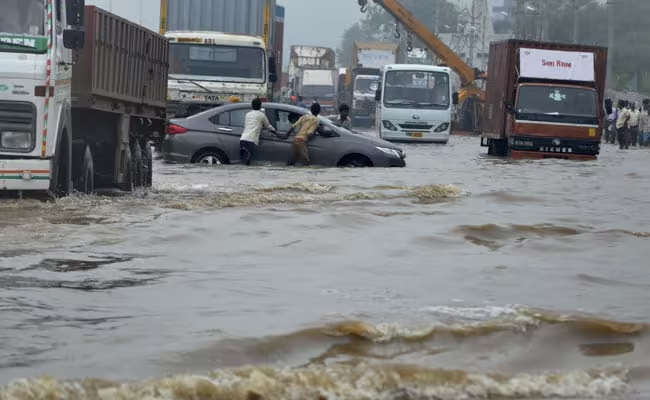Gurugram’s Urban Aspirations: A Reality Check Amid Floods
- July 11, 2025
- 0

The 1983 cult classic “Jaane Bhi Do Yaaro” by Kundan Shah often resurfaces in the minds of many when peculiar events unfold in India. This week, the film’s satire resonates as monsoon rains inundate Gurugram, evoking memories of Tarneja, the relentless real estate developer portrayed by Pankaj Kapur. The flooding has sparked the usual cycle of public outrage, memes, and protests. In the movie, a character dreams of extending Bombay to Dubai by reclaiming the Arabian Sea. Similarly, Gurugram’s rapid expansion towards Sohna and Bhiwadi suggests a future merger with Jaipur. Despite waterlogged roads dominating headlines, real estate advertisements continue to promote “luxe suites” in areas like “South of Gurugram.”
Gurugram’s real estate boom demands a reality check. A drive along the highway to Jaipur might evoke images of an Asian Manhattan, with skyscrapers housing multinational companies. However, the monsoon season reveals the stark contrast between these aspirations and the reality of traffic jams and accidents caused by flooded roads and exposed wires. A recent incident saw a truck swallowed by a massive crater after heavy rains caused a road collapse.
Gurugram’s transformation began in 1991 with India’s economic liberalization under Finance Minister Manmohan Singh. Kushal Pal Singh’s vision for DLF turned Gurgaon from an affordable village into a bustling city. Initially a haven for Delhi residents seeking respite from pollution, Gurugram now grapples with monsoon flooding and winter smog exacerbated by unchecked vehicle growth and stubble burning.
In 1991, Robert Reich wrote about the rise of gated communities for the affluent in the New York Times. Gurugram exemplifies this trend, where rapid development has led to waterlogging, traffic congestion, and pollution. The city’s infrastructure struggles to keep pace with its growth, resulting in a mix of vanity and inadequacy.
Gurugram’s challenging terrain around the Aravalli hills foreshadowed groundwater issues. However, the lack of municipal infrastructure planning compounded these problems. The city only established a municipal corporation in 2008 and unveiled a master plan in 2007. Unlike cities like Noida or Chandigarh, Gurugram’s development was driven more by private developers than comprehensive urban planning.
Gurugram’s affluent residents lack significant political influence. Unlike New York, which has advocates like Zohran Mamdani, Gurugram relies on rural politicians who offer little hope for urban improvements. The city’s residents must engage politically to address infrastructure challenges effectively.
For Gurugram to thrive, development must prioritize quality of life over mere economic growth. A shift towards sustainable urban planning could transform Gurugram into a city where amenities inside gated communities match those outside.